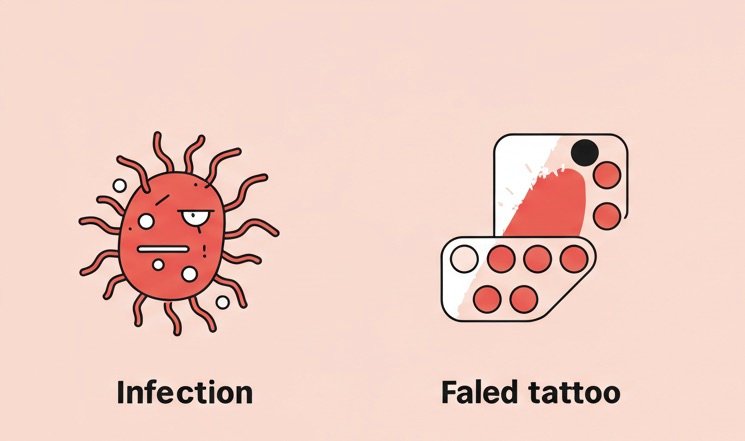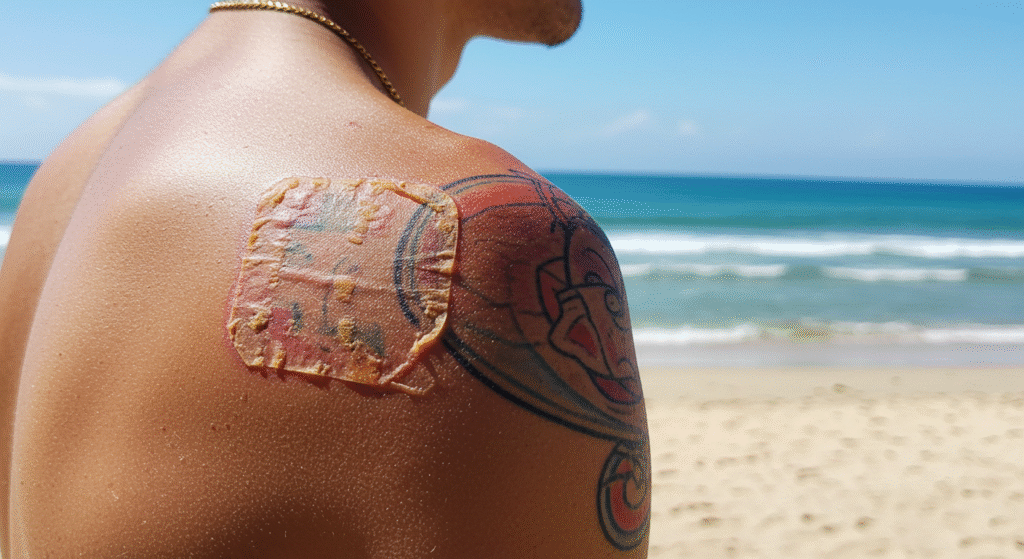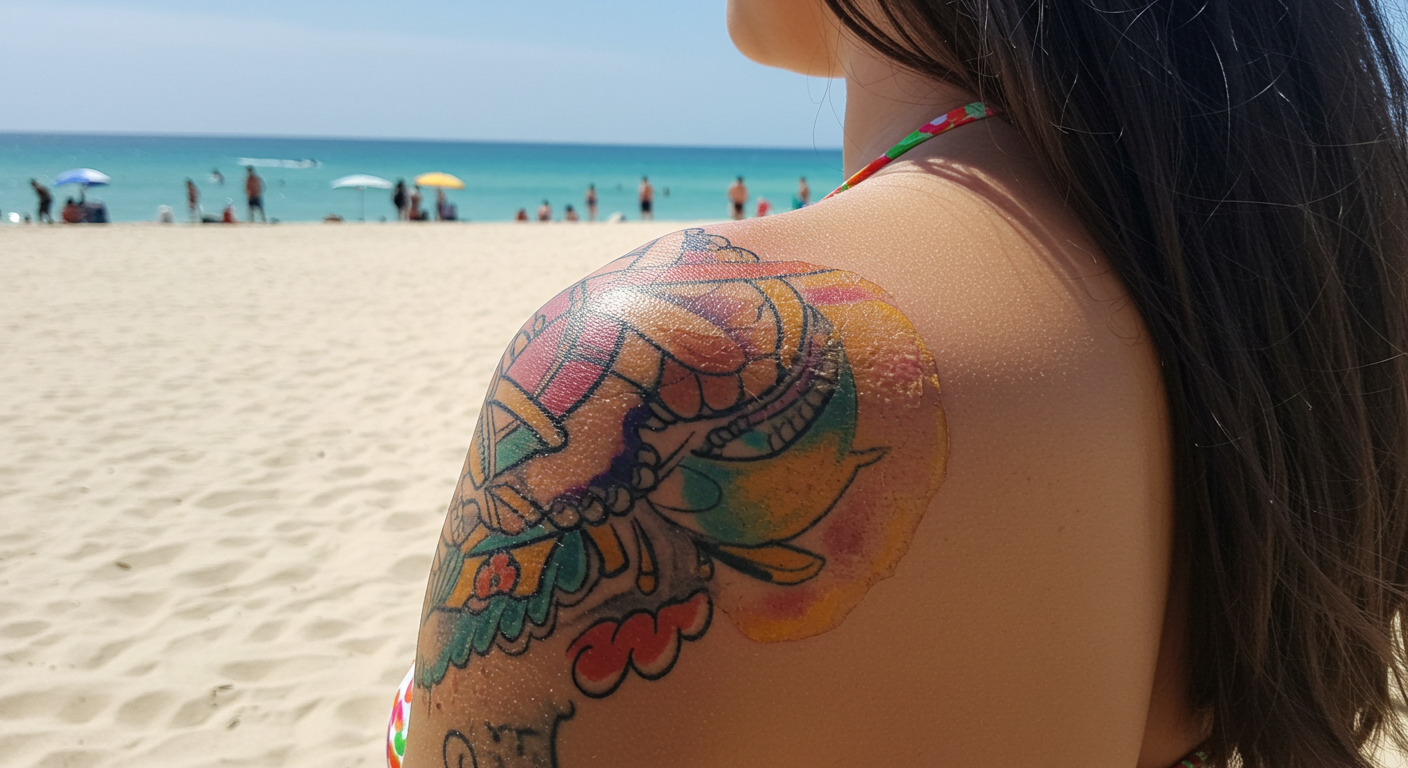Getting a tattoo is exciting—it’s art that becomes part of your body. But after the buzz of the tattoo machine fades, the real work begins: taking care of your new ink. One of the biggest questions people ask is, “How long after a tattoo can you swim?” Whether it’s a dip in the pool, a beach vacation, or a relaxing soak in the hot tub, the timing matters for both your health and your tattoo’s longevity. Let’s break it down so you know exactly when it’s safe, what risks to avoid, and how to care for your ink like a pro. Centers for Disease Control and Prevention (CDC))
Why Swimming After a Tattoo Is Risky
Swimming too soon after getting a tattoo exposes you to two main risks: infection and ink damage. A fresh tattoo is essentially an open wound. Just like you wouldn’t jump into a public pool with a cut on your arm, you shouldn’t do it with a new tattoo. The water in pools, lakes, rivers, and oceans contains bacteria and chemicals that can irritate your skin or cause infections.
How Long Should You Wait Before Swimming?

Dermatologists and tattoo professionals recommend waiting at least 2 to 4 weeks before swimming. This timeframe allows the outer layers of skin to heal, scabs to form and fall off naturally, and the tattoo to “seal.” Everyone’s healing process is slightly different, so your personal timeline may be closer to two weeks if you heal quickly, or up to four weeks if your skin takes longer. Mayo Clinic – Tattoo Risks and Safety)
What Happens If You Swim Too Soon?


If you get in the water before your tattoo heals, several problems can occur:
- Infection risk: Bacteria in lakes, oceans, or even chlorinated pools can enter the open skin.
- Faded or blurred ink: Water exposure can cause ink to leach out, leading to patchy healing.
- Prolonged healing: Moisture prevents scabs from drying and falling off naturally, which extends the healing process.
- Skin irritation: Chlorine and saltwater can sting and inflame tender skin.
The CDC warns that recreational water can carry pathogens like Pseudomonas and Staphylococcus, which can cause skin infections. CDC – Healthy Swimming)
Different Types of Water: Which Is Worse?
1. Swimming Pools
Pools contain chlorine, a chemical designed to kill germs. While chlorine helps keep pools clean, it’s harsh on fresh wounds. On healing skin, it can cause burning, dryness, and irritation, increasing the risk of scarring and poor ink retention.
2. Hot Tubs
Hot tubs are particularly risky. Warm water encourages bacterial growth, and the heat opens pores, which can lead to more ink loss and higher infection risks.
3. Lakes and Rivers
Freshwater sources often contain bacteria and parasites. Even if the water looks clean, it can harbor harmful microbes.
4. Oceans
Saltwater can sting, irritate, and dry out a tattoo. While salt has mild antibacterial properties, ocean water also contains countless microorganisms that may cause infections.
How Do You Know If Your Tattoo Is Healed Enough to Swim?
Healing time varies, but here are signs your tattoo is ready:
- The area is no longer red, swollen, or tender.
- Scabs have fully fallen off naturally—don’t pick them!
- The skin feels smooth again with no open spots or flaking.
On average, this process takes 2–4 weeks. But always follow your tattoo artist’s aftercare advice, since some tattoos (like larger or colored ones) take longer to heal.
Tattoo Aftercare Tips for Faster Healing
Want to enjoy the pool or beach sooner? Proper aftercare is your best tool.
- Keep it clean – Wash gently with fragrance-free, mild soap and lukewarm water.
- Apply moisturizer – Use a tattoo-specific ointment or unscented lotion to prevent dryness.
- Avoid picking scabs – Picking slows healing and increases scarring risk.
- Stay out of the sun – UV rays fade fresh ink. Cover your tattoo or use clothing for protection.
- Follow your artist’s advice – They know the style and depth of your tattoo best.
(Source: Mayo Clinic)
Just like you wouldn’t expect a cavity to heal overnight without proper care, tattoos also require patience and consistent aftercare. If you’re curious, check out our guide on How to Heal Cavities in 2 Days at Home? What You Can and Can’t Do to see how myths and facts differ when it comes to quick fixes.
What About Waterproof Bandages?
Some people wonder if covering a tattoo with a waterproof bandage makes swimming safe sooner. While certain medical-grade bandages provide protection from water, most tattoo artists do not recommend relying on them for full swimming sessions. Extended water exposure, even with a cover, can trap moisture, increase bacterial risk, and damage healing skin.
Long-Term Care: Protecting Your Tattoo Beyond Healing
Even after your tattoo heals, swimming still poses a long-term fading risk. Chlorine, salt, and UV rays all break down pigments over time. To keep your tattoo vibrant:
- Always apply broad-spectrum sunscreen (SPF 30 or higher) before swimming.
- Moisturize your skin regularly.
- Rinse your tattoo with fresh water after swimming.
(Source: Skin Cancer Foundation – Sunscreen Guidelines)
FAQs
Can I shower with a new tattoo?
Yes, but keep showers short, avoid direct spray on the tattoo, and don’t soak in the tub.
What if I swim accidentally with a fresh tattoo?
Gently wash with mild soap, pat dry, and apply aftercare ointment. Watch for signs of infection like redness, swelling, or pus.
Do small tattoos heal faster for swimming?
Not necessarily. Healing depends more on skin health, placement, and aftercare than size alone.
Can swimming ruin a tattoo permanently?
If you swim too early, you may lose ink in spots, leading to patchiness that requires touch-ups.

So, how long after a tattoo can you swim? The safest answer is 2 to 4 weeks, depending on how your skin heals. Jumping into the water too soon can cause infections, blurred ink, and prolonged healing. By waiting patiently and caring for your tattoo properly, you’ll protect both your health and your new piece of art. Think of swimming as a reward for good healing—once your skin is ready, you can dive back in with confidence.

